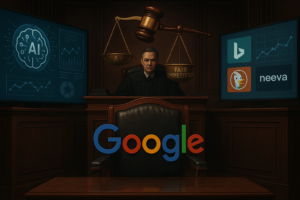Decoding AI-Generated Misinformation: A Growing Challenge in the Digital Age
Generative AI
While it unlocks new frontiers in creativity and efficiency, it also poses significant risks to information integrity and public trust. A recent viral video falsely claiming that Syrian President Bashar al-Assad had resigned is a stark example of the challenges posed by AI-generated misinformation.
The Incident: A Case Study in Misinformation
The video in question, which quickly garnered millions of views across social media platforms, was debunked as a fabrication. While its visuals appeared authentic, the audio—seemingly an official announcement—was generated using advanced AI tools. This incident underscores the sophistication of modern generative AI, which can convincingly mimic human voices and create realistic content with minimal effort.
The debunking of the Assad resignation video highlights two critical issues:
- The ease of creating deceptive content: AI tools enable even individuals with limited technical expertise to fabricate convincing misinformation.
- The difficulty of verifying authenticity: As AI-generated content becomes increasingly realistic, traditional methods of verification often fall short, necessitating the development of advanced detection technologies.
The Role of Detection Technologies
Platforms like TrueMedia.org and similar initiatives have emerged as vital players in the battle against AI-generated misinformation. These platforms leverage cutting-edge algorithms to analyze and identify signs of manipulation in digital content. For example, they may detect inconsistencies in audio spectrograms, pixel anomalies in videos, or irregularities in metadata.
While such tools are indispensable, they are also engaged in a constant race against evolving generative AI techniques. As AI models become more sophisticated, detection systems must advance at an equal or greater pace to remain effective. This arms race underscores the importance of sustained investment in research and development for content authentication technologies.
Ethical Implications of Generative AI
The proliferation of generative AI raises profound ethical questions:
- Accountability: Who should be held responsible for the misuse of AI-generated content? Is it the creators of the AI tools, the users who employ them maliciously, or the platforms that fail to adequately monitor content?
- Regulation: How can policymakers balance the need to foster innovation with the imperative to prevent harm? Overregulation could stifle technological progress, while underregulation could lead to widespread abuse.
- Transparency: Should developers of generative AI be required to embed watermarks or other identifiers to distinguish AI-generated content from authentic material?
These questions demand a collaborative approach, bringing together technologists, ethicists, policymakers, and civil society to establish guidelines for the responsible use of AI.
The Role of Digital Literacy
In addition to technological solutions, digital literacy is a crucial component in combating the spread of misinformation. Educating the public to critically evaluate digital content can significantly mitigate the impact of false narratives. Key strategies include:
- Promoting skepticism: Encouraging individuals to question the authenticity of content, particularly when it evokes strong emotional reactions.
- Teaching verification skills: Providing tools and techniques for fact-checking, such as reverse image searches or consulting trusted sources.
- Raising awareness about generative AI: Informing the public about the capabilities and limitations of AI technologies can reduce susceptibility to deception.
Organizations and educational institutions have a vital role to play in integrating digital literacy into curricula and public awareness campaigns. These efforts can empower individuals to navigate the digital landscape with greater confidence and discernment.
The Broader Implications for Society
Generative AI’s potential for misuse extends beyond misinformation. It has been implicated in:
- Deepfake technology: Creating manipulated videos that can tarnish reputations, influence elections, or incite conflict.
- Cybersecurity threats: Generating convincing phishing emails or voice simulations to deceive individuals and organizations.
- Intellectual property violations: Producing content that infringes on copyrights or mimics the work of artists and creators.
Addressing these issues requires a multi-faceted approach, combining regulation, technological innovation, and public engagement. Policymakers must enact laws that deter misuse without hindering legitimate applications, while researchers must develop tools to identify and mitigate risks proactively.
Moving Forward: Navigating the Age of AI
In HONESTAI ANALYSIS, generative AI represents both an incredible opportunity and a formidable challenge. Its ability to innovate and enhance human creativity is matched only by its potential to disrupt and deceive. To harness its benefits while minimizing its harms, society must:
- Invest in detection technologies: Advancing AI-based tools to identify and flag manipulated content is essential.
- Foster ethical AI practices: Developers must prioritize transparency, accountability, and safeguards against misuse.
- Enhance digital literacy: Empowering individuals to critically engage with digital content is a powerful countermeasure against misinformation.
- Promote global collaboration: Tackling AI-driven challenges requires cooperation across borders, industries, and disciplines.
The viral video of Assad’s alleged resignation serves as a wake-up call. As generative AI becomes more accessible and powerful, its ethical and societal implications can no longer be an afterthought. By embracing proactive strategies, we can navigate this transformative era responsibly and ensure that technological progress serves the greater good.


